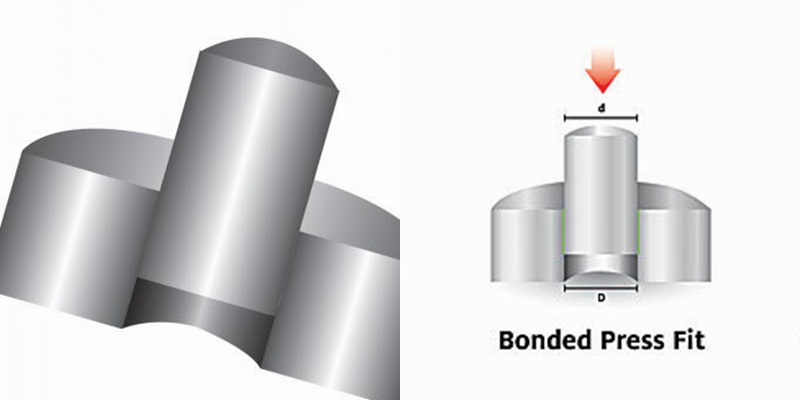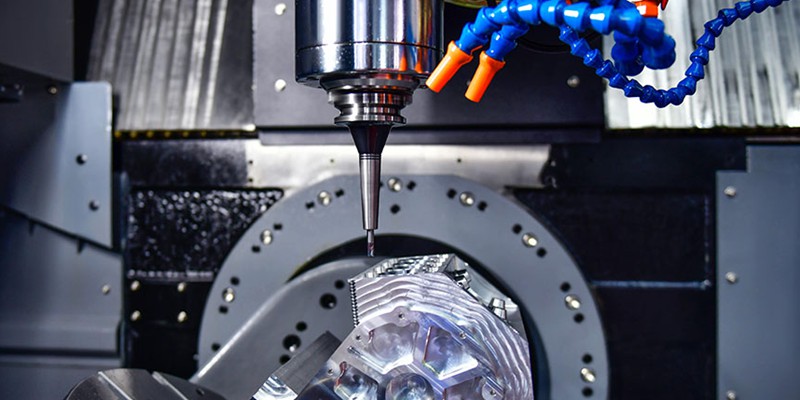What Is Machining Allowance?
We will begin by establishing a definition for what machining allowance is. Machining allowance is the extra material manufacturers intentionally leave on a workpiece, which is to be removed in a controlled environment in subsequent machining operations.
Leaving machined allowances guarantees that there is enough material left on the workpiece surface to achieve accurate and precise machining dimensions, surface finish requirements, and part tolerances.

Machining Allowance Vs. Tolerance
Let us take a small detour and talk about machining allowance vs. tolerance.
In the previous section, we emphasized the use of the word ‘intentional’ as it is the main distinguishing factor between the often confusing concepts of machining tolerance and allowance. While tolerance is also about how much extra/less material is on a workpiece, it is not something that is done intentionally.
Rather, it accounts for the acceptable amount of unintentional variation in the workpiece dimensions. It relates to the fact that it is impossible to achieve the exact dimensions of a part, so engineers define CNC machining tolerances to give manufacturers a target range to stay within.

Why Is Machining Allowance Important?
Leaving machining allowances on parts is important for many practical reasons. This section discusses the reasons why this is a common engineering practice.
- Dimensional Accuracy: Leaving machining allowances on parts gives machinists a safety margin to perform finish machining operations. By leveraging cutting parameters like high speeds and low depths of cut, they can achieve high dimensional accuracy during the final cuts.
- Surface Finish: As with dimensional accuracy, having extra material on the workpiece surface allows machinists to manage the surface quality during the finishing cuts.
- Quality Control: Machining allowances also encourage in-process quality control. Engineers get a chance to monitor the production quality between roughing and finishing cycles and update their manufacturing plans accordingly, leading to fewer part rejections.
How To Calculate Machining Allowance?
Leaving machining allowances is a professional engineering practice, but how much allowance should be left? The answer to this question is more experience-driven than science-driven. Engineers and technicians consider several factors while calculating the appropriate machining allowances for a part.

The major factors are as follows:
Manufacturing Process
The manufacturing process used to produce the part before machining gives a lot of information on how ‘rough’ it is. Between casting and forging, for example, cast parts are generally less dimensionally accurate and thus commonly require a larger machining allowance of 2-5 mm. For forging, it may be 1-3 mm due to its near-net shape results.
Material Properties
Materials that are prone to dimensional changes or accidents during machining typically require larger machining allowances. Thus, engineers choose to have a higher allowance for ductile materials. Aluminum is more ductile than stainless steel, for instance. Their respective machining allowances for the same geometry may be 1-2 mm and 0.5-1 mm, respectively.
Machining Type
Roughing operations with bulk material removal require larger machining allowances than finishing operations with finer cuts. Take a turbine blade machining operation for example. In the initial roughing cuts on the workpiece blank, the machining allowances are high (3-4 mm), but as the process moves forward and the profile of the blade takes shape, smaller machining allowances in the range of 0.5-1 mm may be used for semi-finishing and finishing cuts.
Tolerance/Finish
Parts with high-quality requirements (tight tolerance, fine surface finish) are typically planned with more allowances to ensure that minor deviations can be corrected during final passes.

Formula Of Machining Allowance
While there is no fixed formula for calculating machining allowances, a general guideline accounting for its main factors may be as follows:
Machining Allowance = Surface Variation + Tool Access Margin + Finish Requirement Buffer
Let us consider the case of the engineering drawing below and make a rough calculation of the machining allowance. Assuming the part is to be machined from Aluminum a conservative machine allowance of 0.5-1 mm would be OK, considering its simple geometry and no tolerancing requirements on the main dimensions.
For positioning the hole, however, larger allowances might be necessary. There is a tolerance on the position (±0.05mm) and a unilateral tolerance on the hole diameter (+0.1 – +0.3mm); the surface variation allowance can be 0.5 mm. There is no problem with tool access, so that allowance can be ignored. However, we need the hole to be smooth and might use finishing operations with reaming or polishing. Thus, the finish requirement buffer can be 0.1 mm.
Therefore, the machining allowance for positioning and drilling the hole would be:
Machining Allowance = Default (0.5) + Surface Variation (0.5) + Finish Requirement Buffer (0.1) = 1.1 mm

Common Challenges In Managing Machining Allowances
Machining allowances are an important intermediary process in machining, and managing them properly is critical to successful production. Machine shops may face the following challenges when managing machining allowances:
Over-Allowancing
Leaving machining allowances is a safe engineering approach, and it is possible to over-allow a part in high-risk designs. This extra allowance leads to unnecessary energy and material waste, tool wear, and longer production times.
Under-Allowancing
Similarly, engineers may underallowance parts while attempting to prioritize operational efficiency. This is also problematic as it may not leave enough material to properly control the tolerance or surface finish. Resultingly, it can lead to part rework or scrap.
Complex Geometric Features
Machining allowance is easy to define for simple prismatic or cylindrical geometries, but it is quite tricky for parts with complex profiles or undercuts. For such features, engineers need to assign localized machining allowances and use advanced CAD/CAM solutions.
Material Inconsistencies
Machining allowance definition depends significantly on the material, but it is common to experience slight variations in material properties in different batches, brands, and directions. The inconsistencies make managing machining allowances challenging in high-precision industries.
Tool Wear
Cutting tools degrade over time, and this can change the amount of material they remove. This can be problematic when dealing with machining allowances as the part dimensions become variable.
Machine Tool Condition
The accuracy of CNC machines deteriorates over time. This makes them unpredictable in maintaining tight tolerances, making it difficult to manage machining allowances on the shop floor.




 ShenZhen Washxing Technology Co.,Ltd
ShenZhen Washxing Technology Co.,Ltd




